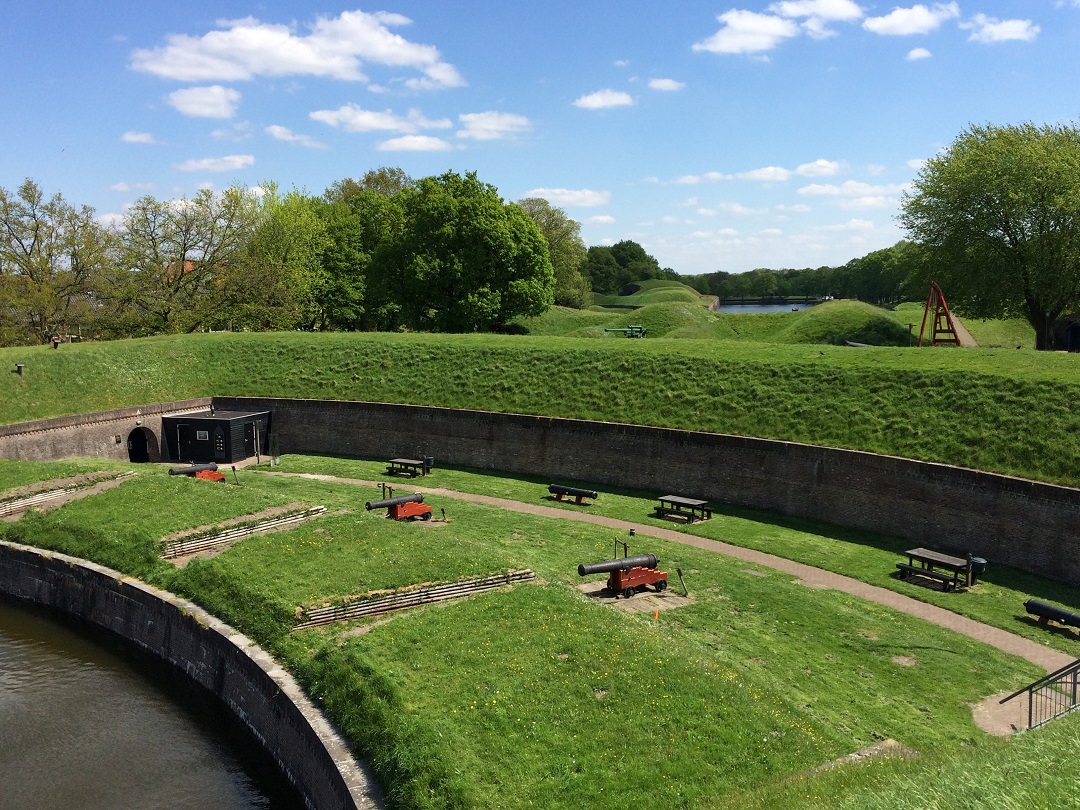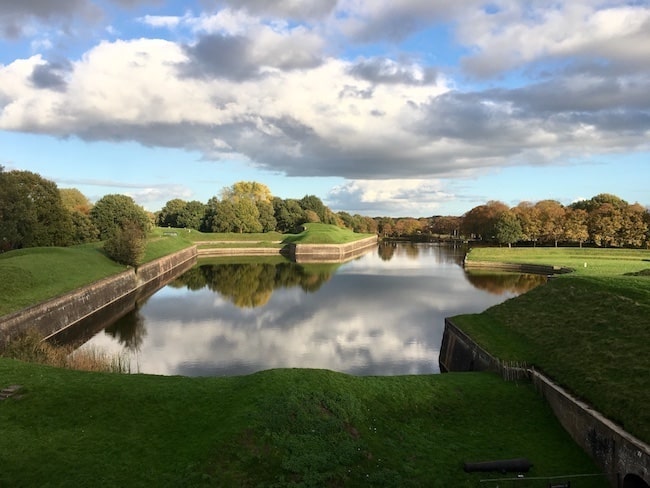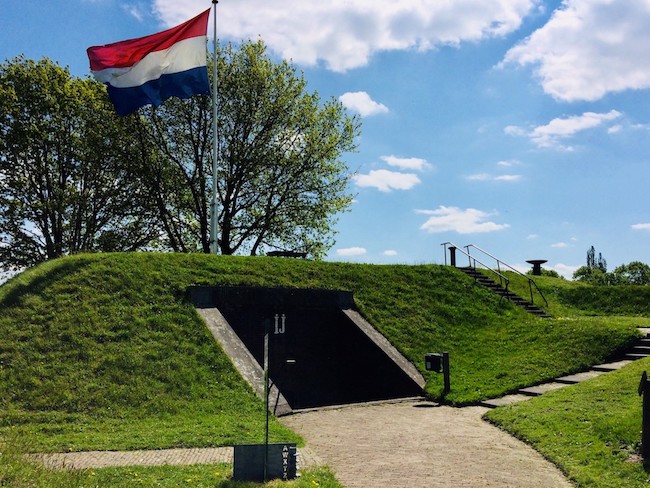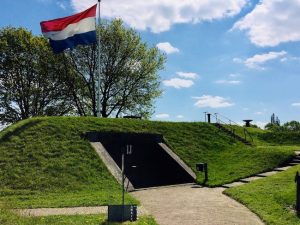
Museum
The Dutch Fortress Museum is located on the Turfpoort bastion in Naarden, one of the six bastions that give the fortress town its characteristic star shape. This 17th-century heritage site has been largely preserved in its original state and gives a good insight into how the fortress functioned as a fortification. In the outside area you can stroll around in a park-like environment and enjoy the view of the fortifications. The casemates house the exhibitions of the museum.
Themes in the museum:
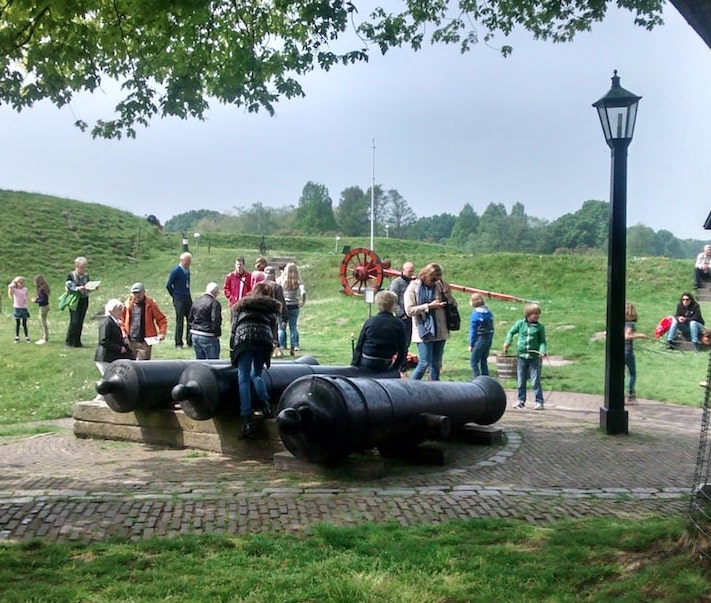
Terre square
Turfpoort Bastion
The current form of the Turfpoort bastion dates from the period between 1675 and 1685, when the fortress was modernised at the behest of Stadholder William III, following the principles of the New Dutch Fortress system. The bastion was enlarged and provided with canons positioned on two levels, the so-called high and low flanks. Behind the shoulders of the lie posterns; small ports that give access to the moats. This way, soldiers could be transported to the ravelins, the islands in the moat.
Casemates
During the modernisation of the fortress in 1685, casemates were constructed in the bastions. A Casemate is a bomb-proof brick room provided with an earthen covering. In some cases, the walls are almost 2 metres thick, the earthen covering is 3 to 4 metres. As a result, the casemates were well-protected against incoming fire, consisting of massive iron bullets without an explosive charge. In the casemates the canon cellars from where the enemy could be attacked. The artillery was positioned in such a way that the fire lines overlapped in a cross: lethal crossfire!
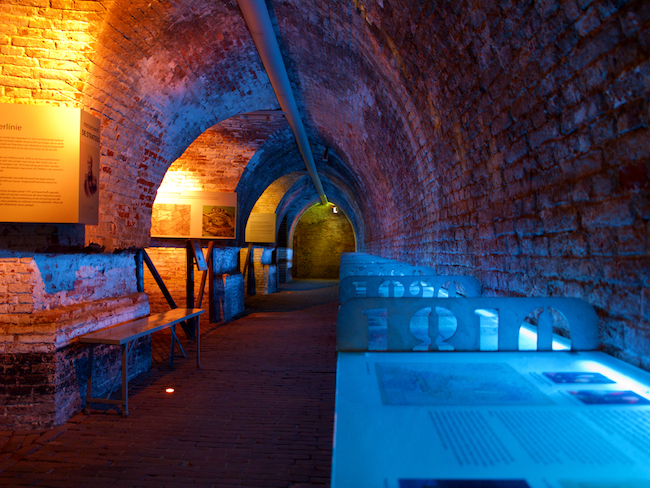
Exposition in the Casemates
Powder rooms
Without gunpowder you cannot fire canons. For this reason, the bastion has 2 powder rooms in which gunpowder was stored. The walls of the powder rooms are the thickest of all buildings of the bastion.
Low Flank
Modernisation 19th century
In the 19th century, the fortress was modernised to be able to resist the increasing range of the artillery. On the Turfpoort bastion a mortar casemate was built in 1877 with 3 mortar recesses (high-trajectory artillery). This casemate IJ consists of two levels and accommodated 48 soldiers, non-commissioned officers and officers. Besides, a bomb-proof storage room was constructed for canons: Canon depot X. In the depot, consisting of 2 vaults, you find the entrance box, the museum shop and the museum café.

